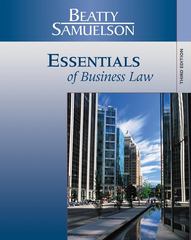

Provide clear solutions for each of the following questions
SECTION A All the questions in this section (questions 1-6) refer to an economy in which the consump- tion (C) and investment (/) functions are given by C = 50 + 0.9 - (Y - T) 1 = 50 - 1000 . r where Y is real output and r is the real interest rate. Government purchases and taxes are G = 500, T = 500. The money market equilibrium curve or LM curve-is M Y P where P is the price level and i is the nominal interest rate. The Central Bank (CB) is initially supplying M = 10000 units of money, and expected inflation is * = 0.05. The long-run aggregate supply (LRAS) is Y. = 1000. Suddenly, there is a climate shock that changes the marginal propensity to consume (MPC), and the consumption function changes to C' = 50 + 0.8 . (Y - T). Question 1 First, we will derive the long-run equilibrium values of output Y', consumption C, investment I, the real and nominal interest rates (r, i) and price P, before and after the climate shock. [29 marks] 1. Explain how the long-run values of (r, i) are determined before the climate shock. 2. Which, if any, of the graphs from Appendix A best depicts the long-run change in the interest rate(s) due to the climate shock? Explain. 3. Explain how the long-run values of (Y, P) are determined before the climate shock. 4. Which, if any, of the graphs from Appendix B best depicts the long-run change in output and price due to the climate shock? Explain. 5. Fill in the following table in your answer sheet with numbers-there are 12 numbers to solve for. You do not need to create a table when you type your answers, but please clearly indicate "Before", "After" and the name of each variable, followed by your answer. Y C I T(%) i(%) P before: after:4. Suppose a workers skill is captured by his efficiency units of labor. The distribution of efficiency units in the population is such that worker 1 has 1 efficiency unit, worker 2 has 2 efficiency units, and so on. There are 100 workers in the population. In deciding whether to migrate to the United States, these workers compare their weekly earnings at home (wo) with their potential earnings in the United States (w1). The wage-skills relationship in each of the two countries is given by: WO = 700 + 0.5s W1 = 670 + s where s is the number of efficiency units the worker possesses.Question 2 (32 marks) A competitive firm uses two inputs, capital (k) and labour (I), to produce one output, (y). The price of capital, Wk, is $1 per unit and the price of labor, wi, is $1 per unit. The firm operates in competitive markets for outputs and inputs, so takes the prices as given. The production function is f(k, () = 6k0.5105. The maximum amount of output produced for a given amount of inputs is y = f (k, l) units. a) Use the method of Lagrange to find the conditional factor demands for cost minimization. 18 marks] b) Find the firm's cost function. [2 marks] c) Would you call this a short-run cost function or a long-run cost function? Explain why. [2 mark]d) Write the equations for the firm's average cost function. [2 marks] e) Write the equations for the firm's marginal cost function. [2 marks] () Show the firm's long-run supply function on a diagram and write a supply function for the firm. [3 marks] g) Using your supply function, find the profit maximising quantity if the price of output is P = 10. What price would be needed for the firm to supply 16 units of output? [4 marks]












